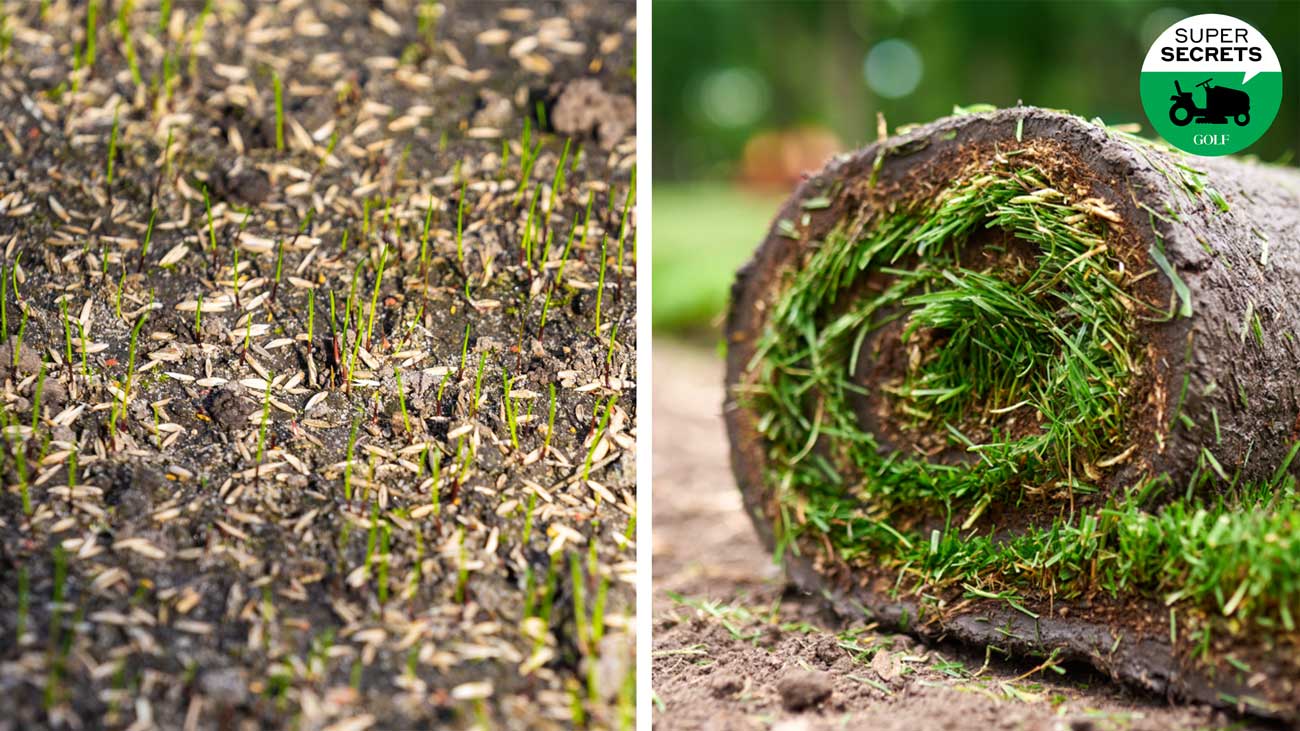To seed or sod? That is the question — whether it is wiser to scatter bare ground with the promise of new growth, or to cover it in a toupee of established turf.
Jeremy Hreben is the superintendent at Indian Spring Country Club, in New Jersey, and a longtime member of the Golf Course Superintendents Association of America.
We asked him about the pros and cons of each approach.
1. Time and labor
Seed: The first job is quick and easy: scatter and water. But that doesn’t mean your work is done. Because it takes time for the grass to get established, you’ll have to stick with a regimented irrigation schedule, making sure the ground stays consistently damp. Patience, patience. Once he seeds new ground on his course, Hreben says it takes around three months before it’s ready for play.
Sod: This is the heavier lift upfront. And we mean that literally. But once you’ve laid the sod down and watered it robustly, the hard part is behind you. In most cases, the turf is playable within weeks. “It’s the instant gratification way to go,” Hreben says.
2. Turf quality
Seed: All things being equal, Hreben says he prefers seed to sod. Growing grass is gratifying, and when you do it right, you wind up with beautiful, healthy turf. But things aren’t always equal. On slopes or bunker edges and other areas prone to erosion, seeds have a tendency to wash away. In those cases, Hreben prefers sod.
Sod: In the long term, Hreben says he doesn’t notice a big difference in quality between seed and sod. In the short term, though, sod often comes with thatch and insects, requiring aeration and de-bugging shortly after it’s installed.
3. Cost
Seed: Like the price of gas and milk and, well, pretty much everything, the cost of seed has been on the rise. But it’s still cheaper than sod, Hreben says.
Sod: On average, Hreben says, it costs about twice as much as seed to cover the same amount of ground.
4. Home lawn considerations
Seed: If you’re dealing with a relatively small area, Hreben says that seed is the only way to go. Don’t bother buying sod to cover a small bare patch. Scatter some seeds, keep them wet and away you go.
Sod: With larger areas, sod makes sense, assuming that it fits your budget. If you’re doing the job yourself, make sure it lays perpendicular to any slopes and stagger the sod pieces so they don’t slide. “This also helps keep the edges from drying out and creates a more uniform look when the sides take root,” Hreben says.
